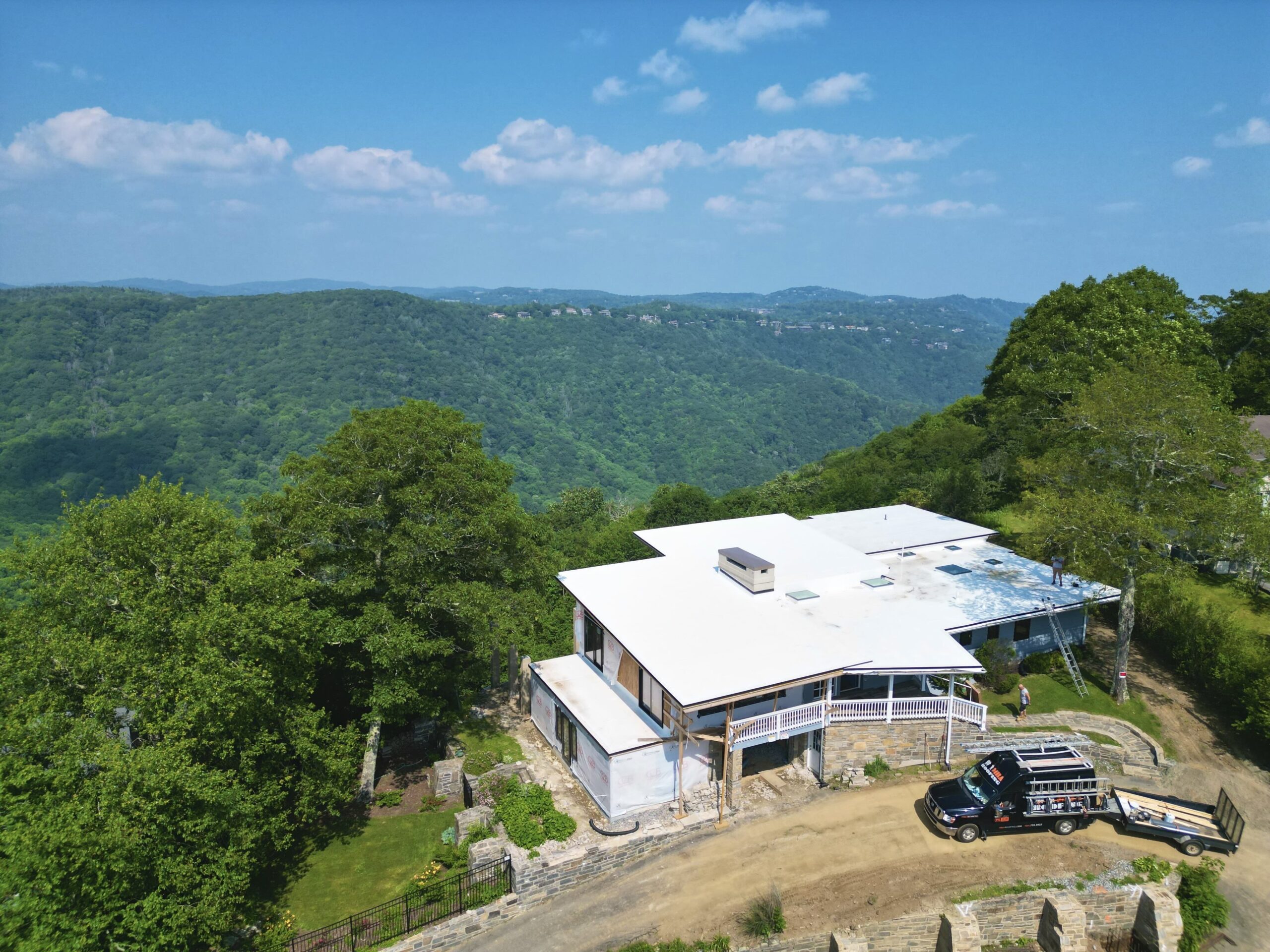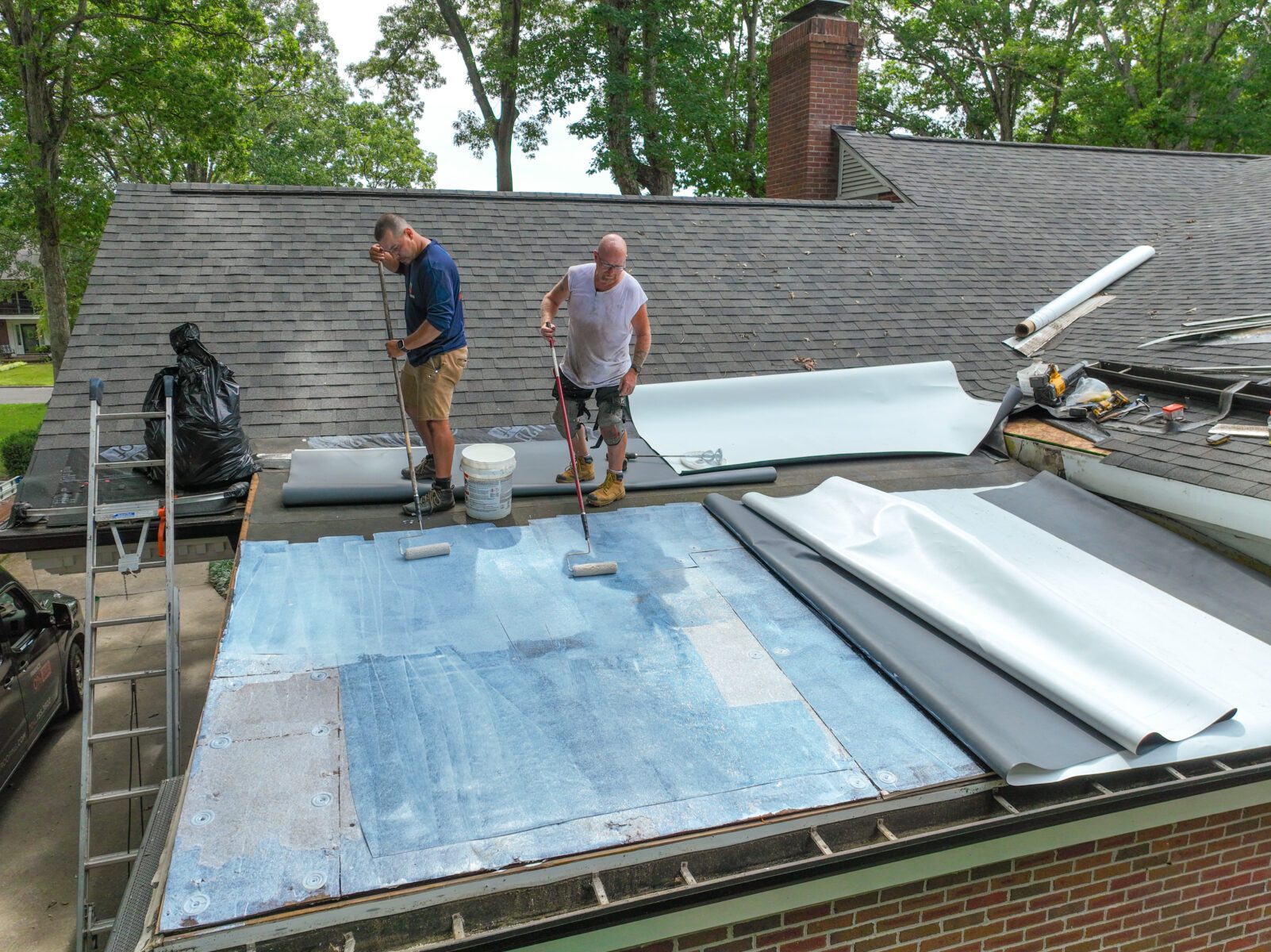Understanding TPO Roofing
TPO membrane roof is a single-ply white membrane made of thermoplastic polyolefin, a blend of polypropylene and ethylene-propylene rubber. This roofing material has gained immense popularity in the commercial roofing industry due to its outstanding properties and benefits. TPO roofing membrane is particularly suitable for low-slope or flat roofs, making it a common choice for commercial facilities.
One of the standout features of TPO roofing is its durability. The material is designed to resist weather, ozone rays, heat, and oxidation, ensuring a long lifespan and reliable performance. Additionally, the bright white color of TPO roofing helps reflect sunlight, significantly improving energy efficiency. This reflective property not only reduces heat absorption but also contributes to lower cooling expenses in warm climates.
TPO roofing comprises about 40% of the commercial roofing market, a testament to its widespread acceptance and effectiveness. It’s favored not only for its energy efficiency but also for its cost-effectiveness, offering a budget-friendly option for many commercial roofing applications. Moreover, TPO roofs are known for their ability to provide a balance between performance and cost, making them an attractive option for many building owners.

The Benefits of TPO Roofing
One of the primary benefits of TPO roofing is its energy efficiency. The reflective properties of the TPO membrane reduce heat absorption, which helps lower cooling expenses in warm climates. TPO roofing systems reflect UV rays and heat, reducing energy consumption and cooling costs, which makes them a cost-effective option for building owners. The energy-saving feature is especially beneficial during hot summer months when cooling costs can skyrocket.
In addition to energy efficiency, TPO roofing is known for its durability. The material is designed to withstand harsh weather conditions, including extreme heat and UV exposure, without degrading. This durability translates into a longer lifespan and fewer maintenance requirements, saving money on repairs and replacements over time. The resilient nature of TPO roofing membranes makes them a reliable choice for commercial facilities that need a robust and long-lasting roofing solution.
Another significant advantage of TPO roofing is its cost-effectiveness. Compared to other single-ply roofing membranes, TPO often provides a more affordable option without compromising on quality. Its budget-friendly nature, coupled with the ability to reflect heat and reduce energy bills, makes TPO roofing an attractive choice for many commercial applications.
How to Choose the Right Roofing Contractor
Choosing the right roofing contractor is crucial for a successful TPO roofing project. Experience in the industry is vital; a contractor with a longer operational history is likely to have better expertise. Checking the contractor’s reputation through reviews and personal recommendations can provide insights into their reliability.
Referencing previous projects and asking former clients about their experiences can offer valuable information about a contractor’s performance. It’s also important to compare multiple quotes, as the lowest price may not guarantee quality service. Selecting a reputable and experienced roofing contractor ensures the success and longevity of your TPO roofing system.
Installation Process of TPO Roofing
The installation process plays a critical role in the performance and longevity of TPO roofing. The initial step involves inspecting and preparing the roof to address any existing problems, such as damaged or deteriorated areas. Proper preparation provides a solid foundation for the TPO membrane.
Once the roof is prepared, an insulation layer, usually made of rigid board insulation, is installed to provide thermal resistance and support for the TPO membrane. The TPO membrane is then rolled out on the roof and secured using either heat welding or adhesive methods. Heat welding is a preferred method as it creates a bond as strong as or stronger than the TPO sheet itself, ensuring durability and resistance to leaks.
Flashing is applied around roof penetrations to prevent water leakage, followed by a final inspection to ensure all components of the TPO roofing system are installed correctly. Given the complexity of the installation process, hiring a professional roofing contractor is highly recommended to ensure quality and adherence to building codes.
The lightweight nature of TPO roofing allows for quicker installation compared to traditional materials, leading to lower labor costs and faster project completion.
Comparing TPO with Other Roofing Materials
When comparing TPO with other roofing materials like EPDM and PVC, several factors come into play. A key advantage of TPO is its reflective surface, which reduces heat buildup inside buildings and contributes to energy savings. TPO also provides significant resistance to UV rays and ozone, outperforming EPDM in this respect.
Though TPO is relatively easy to install, its seams require high-quality heat welding for durability. PVC roofing, on the other hand, is eco-friendly and recyclable but may not perform well in colder climates due to its brittleness.
Each material has its own set of advantages and drawbacks, making it essential to choose the one that best fits your specific needs and conditions.
Environmental Impact of TPO Roofing
TPO roofing is designed to be eco-friendly, crafted from recycled materials and fully recyclable at the end of its lifespan. This promotes sustainability and minimizes environmental impact. The composition of TPO roofing is free from chlorine and other harmful substances, enhancing its environmental friendliness.
TPO roofing helps reflect up to 80% of the sun’s heat, contributing to energy savings. Its lightweight nature reduces structural load, potentially conserving resources during construction. Overall, TPO roofing is a sustainable building option, offering a balance between performance and environmental responsibility.



